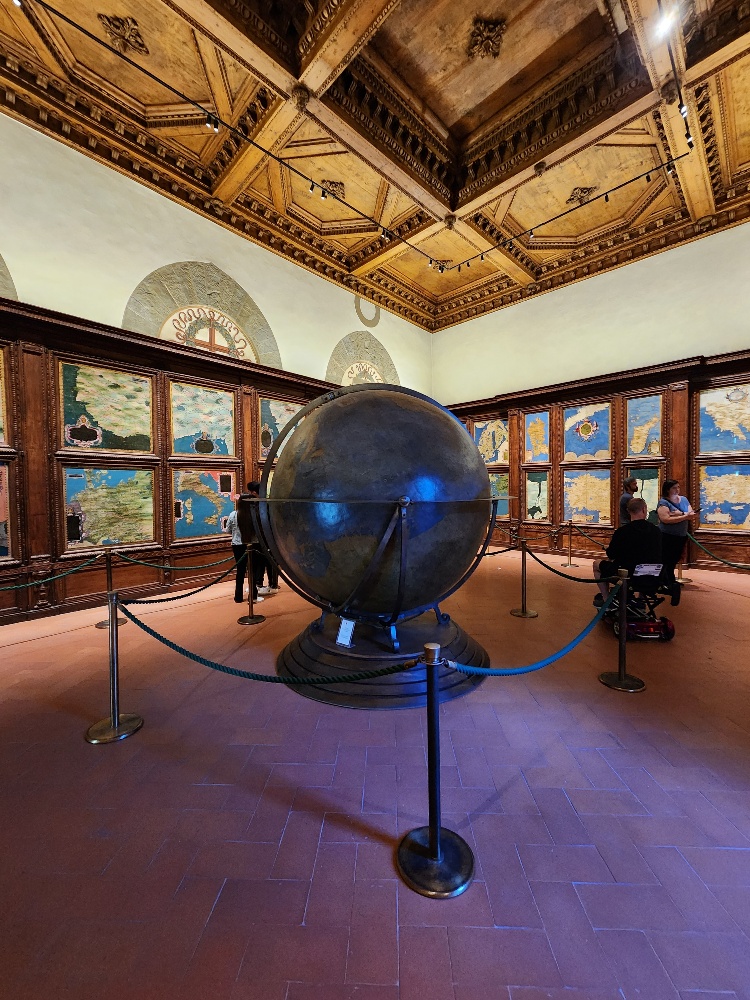Conjure up images of Florence, Italy. What comes to mind? The red brick slope of Brunelleschi’s cupola atop the Duomo? Michelangelo’s statuesque marble depiction of David? The store-lined old bridge appropriately named Ponte Vecchio? All of these images come immediately to my mind, but so does the crenellated tour of the fortress/palace/civic heart of Florence—Palazzo Vecchio.
The Palazzo Vecchio, a historic building constructed in the late 13th century, serves today as the town hall of the city. It is a prominent symbol of Florence’s civic power and the piazza in front, Piazza della Signoria, is still filled with historic reenactments, civic gatherings, events, and even occasionally protests. You can see politicians going in and out the doors, as well as couples who just got married. It is truly the heart of the city…and has been for centuries.
The palace was originally designed by famed architect Arnolfo di Cambio. It is an imposing edifice and has had a commanding presence over the city for hundreds of years. Crafted from solid, rusticated stonework, the exterior is decorated with Gothic-looking windows, arches, coats of arms, and bas-reliefs. The crown of the palace, the Torre di Arnolfo, stands over 300 feet tall. I’ve climbed its 200+ stairs many times and have always enjoyed the views from the top—where one can really get a sense of how defense of the building occurred. On the way up, you pass cells and other small rooms.
For years, Michelangelo’s statue of David stood out front of the Palazzo Vecchio—today, the statue has been moved in the Accademia (to keep it safe) but a replica still stands there. The piazza and nearby Loggia dei Lanzi boast loads of art to take in. The Piazza della Signoria (named for the ruling body—the Signoria—which once met inside the building) is home to numerous sculptures and the fabulous “Fountain of Neptune” by Bartolomeo Ammannati. Cafes, stores, and restaurants ring the piazza. Adjacent to the Palazzo Vecchio is an open-air gallery called the Loggia dei Lanzi, which holds statues such as Cellini’s “Perseus with the Head of Medusa.”
The outside is certainly impressive and it’s hard to believe more treasures exist inside…but they do. Enter through Michelozzo’s courtyard with its decorative columns and frescoes for a truly beautiful entrance into the building. Along with its governmental offices, the Palazzo Vecchio acts as a museum where visitors can explore…
Click Here to Read the Full Original Article at Roaming Historian…
